The Clone Wars: A Saga Forged in Lightsaber Duels
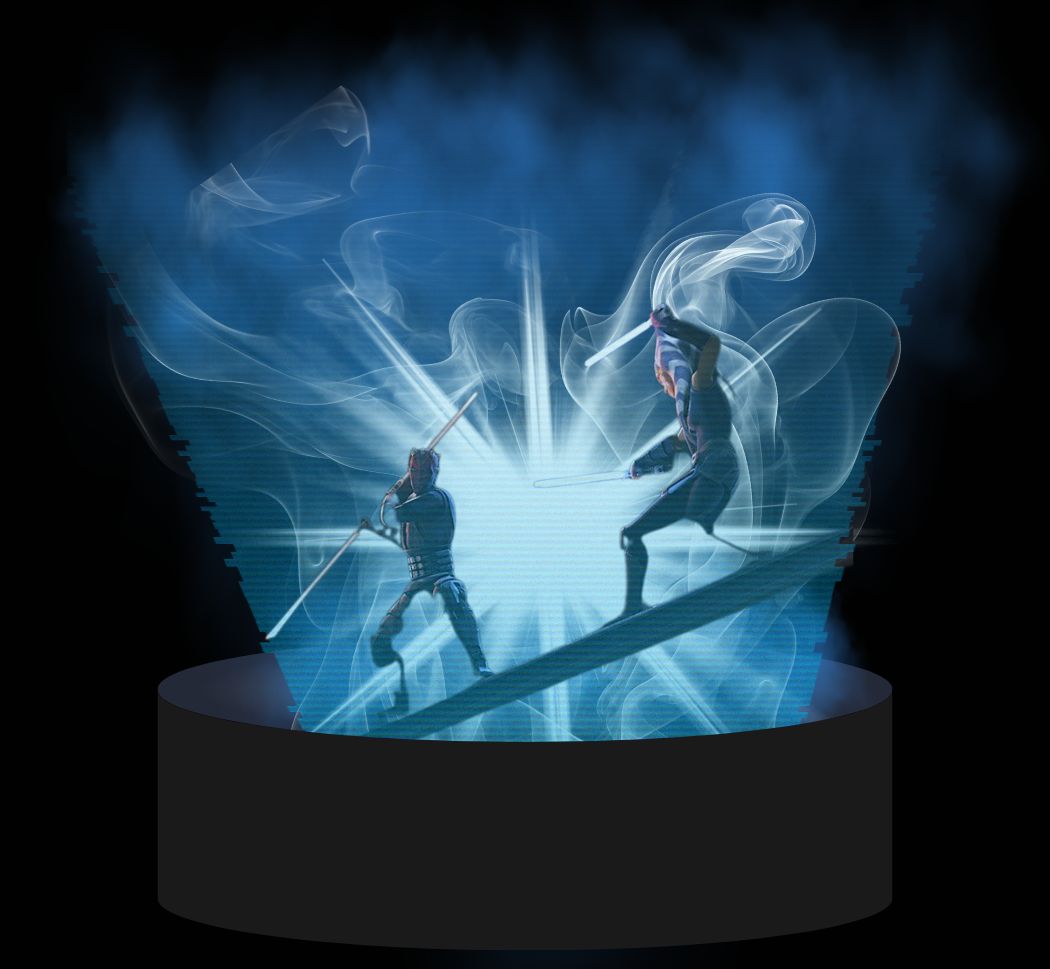
The Clone Wars redefined lightsaber combat as narrative art, with each duel revealing deep character truths and galactic shifts. From Anakin vs. Dooku to Ahsoka vs. Maul, and even Yoda’s spiritual confrontations, every clash carried emotional weight, philosophical stakes, and shaped destinies across the Jedi, Sith, and beyond.
The Clone Wars: A Saga Forged in Lightsaber Duels
Star Wars: The Clone Wars stands as more than a mere backdrop of galactic conflict—it is a sprawling battlefield of clashing ideologies, seething betrayals, and deeply personal reckonings that forever altered the courses of the Jedi and the Sith.
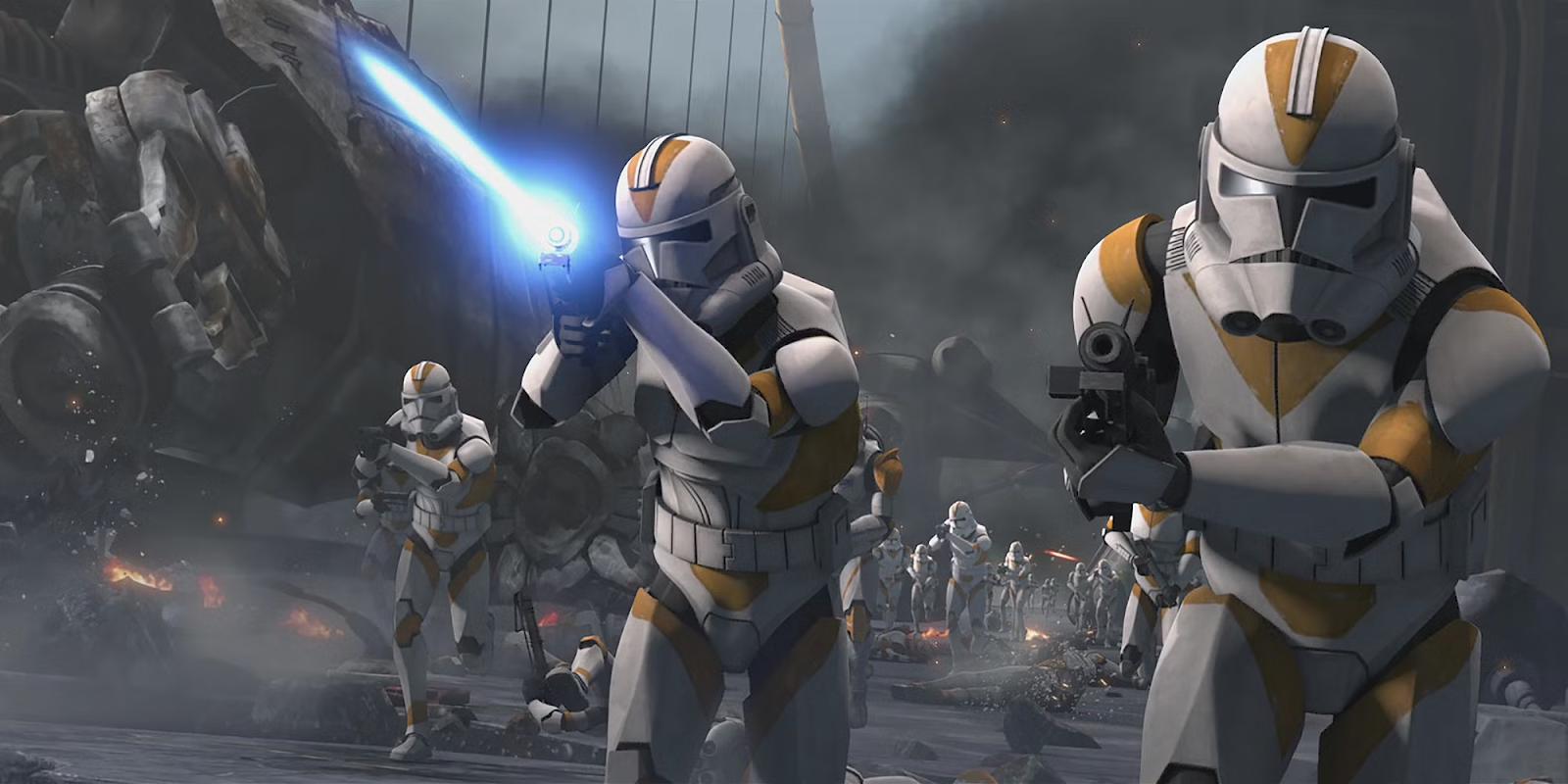
The animated series expanded our understanding of these ancient orders by showcasing duels that transcend spectacle, reflecting internal struggles as much as external warfare. These battles in lights and shadows redefine what it means to wield power, honor, and despair in a galaxy torn by war.
Through masterful storytelling and intricate choreography, the series elevates each duel beyond flash and flair, making them pivotal turning points in character development and galactic fate.
Whether tragic or triumphant, the dueling moments serve as lens into the complexity of heroes and villains alike, reinforcing that in this war, every strike carries the weight of legacy and consequence.
Anakin Skywalker vs Count Dooku: Mastering Rage on Naboo and Beyond
The duels between Anakin Skywalker and Count Dooku serve as powerful reflections of their starkly contrasting personas and philosophies, most memorably plotted against the scenic yet deadly backdrop of Naboo.

Anakin embodies raw emotion—his furious saber strikes crackle with a volatile blend of passion and youthful arrogance, underscoring his inner turmoil.
Dooku, by contrast, moves with poised elegance and calculated precision, a stark portrait of Sith control and cold detachment. This tension between impulse and discipline animates every clash, providing insight into the ideological and emotional schism dividing master and apprentice.
These battles foreshadow Anakin’s tragic descent, revealing how his inability to temper rage makes him susceptible to darkness. Their confrontations are more than physical; they are philosophical duels—Dooku standing as the dark path Anakin may yet embrace, while Anakin struggles between burgeoning light and shadow.
The unfolding duels thus lay critical groundwork for Anakin's eventual fall, each strike vibrating with foreboding portent.
Ahsoka Tano vs Darth Maul: Duel for Mandalore, Duel for Destiny
The epic confrontation between Ahsoka Tano and Darth Maul during the Season 7 episode “The Phantom Apprentice” is a masterclass in choreography and narrative resonance.

Utilizing Ray Park’s motion capture to channel Maul’s iconic agility and menace, the duel shatters glass and tensions alike within Mandalore’s ruined halls. This fight is not a mere contest of lightsabers but a harrowing meeting of two survivors, each shaped by the collapse of their orders and driven by survival, vengeance, and a fractured destiny.
Maul’s offer—a tentative bid for alliance—adds psychological depth, transforming the duel into a moment of choice and intrigue rather than mere combat. Their battle echoes the layered histories of the Jedi and Sith, capturing the painful legacies of loss and betrayal.
The physical destruction around them mirrors the shattering of old allegiances, making the duel a pivotal moment that redefines Mandalore’s fate and Ahsoka’s path.
Obi-Wan Kenobi vs Darth Maul (and Savage): The Sundari Showdown
In Season 5’s “The Lawless,” Obi-Wan Kenobi confronts two formidable foes—Darth Maul and Savage Opress—in a duel fraught with personal and political stakes.
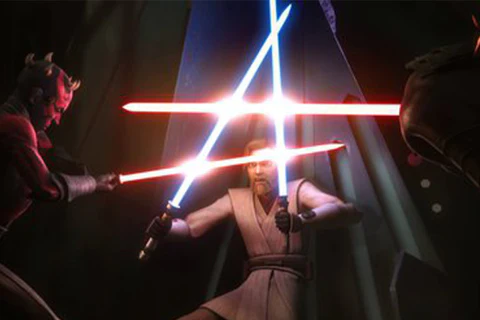
The battle is steeped in tragedy from the beginning, highlighted by Maul’s ruthless assassination of Duchess Satine, Obi-Wan’s former love and symbol of Mandalore’s pacifist ideals. Obi-Wan’s fight channels his grief, discipline, and determination in equal measure, his style reflecting his inner conflict between vengeance and measured restraint.
This showdown encapsulates the thematic tensions between past and present, rage and control. Obi-Wan’s resistance to Maul’s chaos and Savage’s brute force is a testament to his evolving mastery and emotional resilience.
The duel becomes a microcosm of the Clone Wars itself—where personal loss and galactic strife collide, demanding warriors to navigate both their emotions and their blades with precision.
Yoda vs Dooku and Sidious: Probing the Depths of the Dark Side
Yoda’s duels with Count Dooku and his vision of Darth Sidious represent some of the most spiritually and physically intense moments in The Clone Wars.

His battle with Dooku in Season 1 reveals a breathtaking display of acrobatic Form IV lightsaber combat, blending relentless physicality with deep spiritual focus.
Yoda’s precise strikes and graceful movements underscore his unique harmony with the Force, contrasting Dooku’s lethal but more aggressive form.
His confrontation with Sidious in a latter-season vision transcends physical battle, delving into a philosophical probing of darkness and power. Yoda’s unwavering calm and inner strength illuminate the stark differences between Jedi wisdom and Sith ambition.
These encounters are not only tests of combat skill but profound explorations of the Force’s duality, marking Yoda as the embodiment of light’s resilience in a galaxy shadowed by Sith influence.
Ahsoka Tano vs Barriss Offee: The Duel That Broke the Jedi
The duel between Ahsoka Tano and Barriss Offee, portrayed in “The Wrong Jedi,” is one of The Clone Wars’ most emotionally charged and ideologically complex moments.
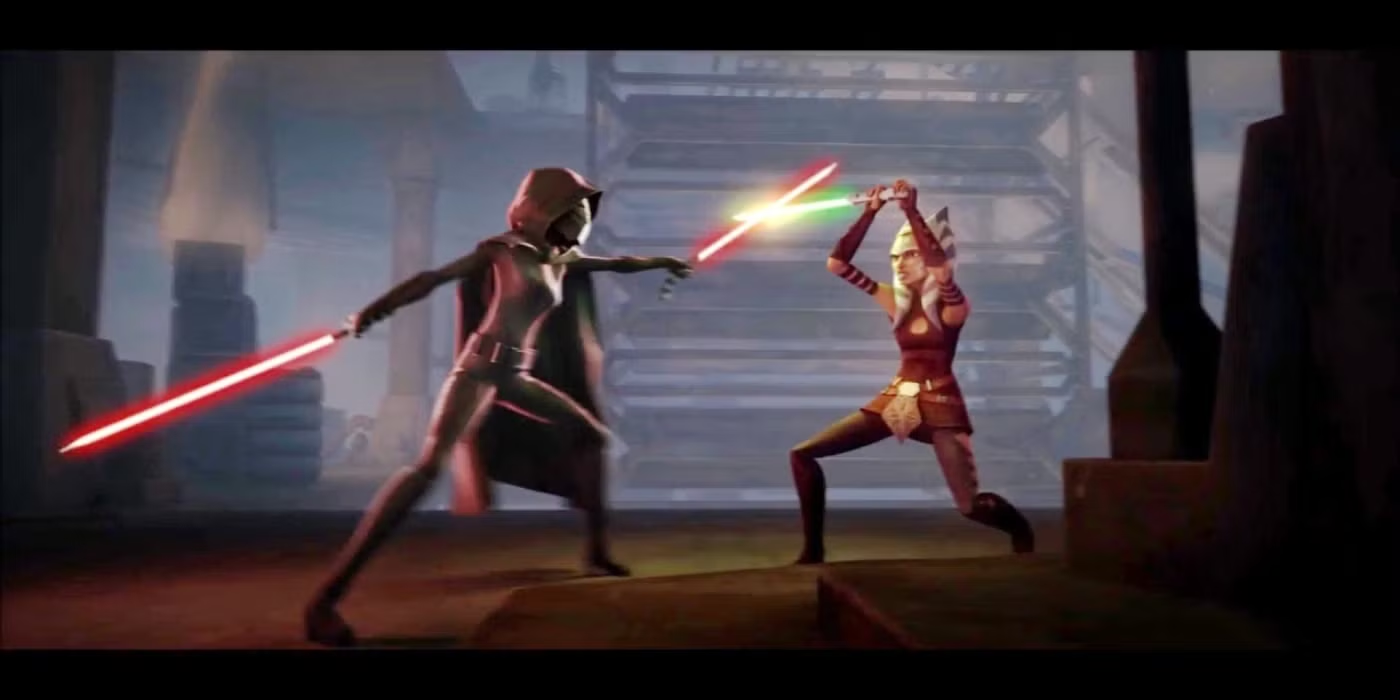
This confrontation arises from betrayal—Barriss’s sabotage and false accusation strike at the heart of trust and friendship between the two.
Their duel, charged with sorrow and disillusionment, transcends lightsaber combat to become a spiritual and moral reckoning, exposing fractures within the Jedi Order itself.
This battle symbolizes Ahsoka’s shattering faith in the Order and marks her subsequent departure, a seismic shift for her character and the saga’s narrative.
The conflict challenges not only their personal dynamics but raises broader questions about the Jedi’s role, questioning the black-and-white binaries of light and dark.
Their duel remains a poignant exploration of friendship, principle, and the painful costs of ideological corruption.
Anakin Skywalker vs the Son: The Force Unleashed on Mortis
The Mortis arc introduces a metaphysical duel between Anakin and the Son, a dark embodiment of the Force’s malevolent aspects.
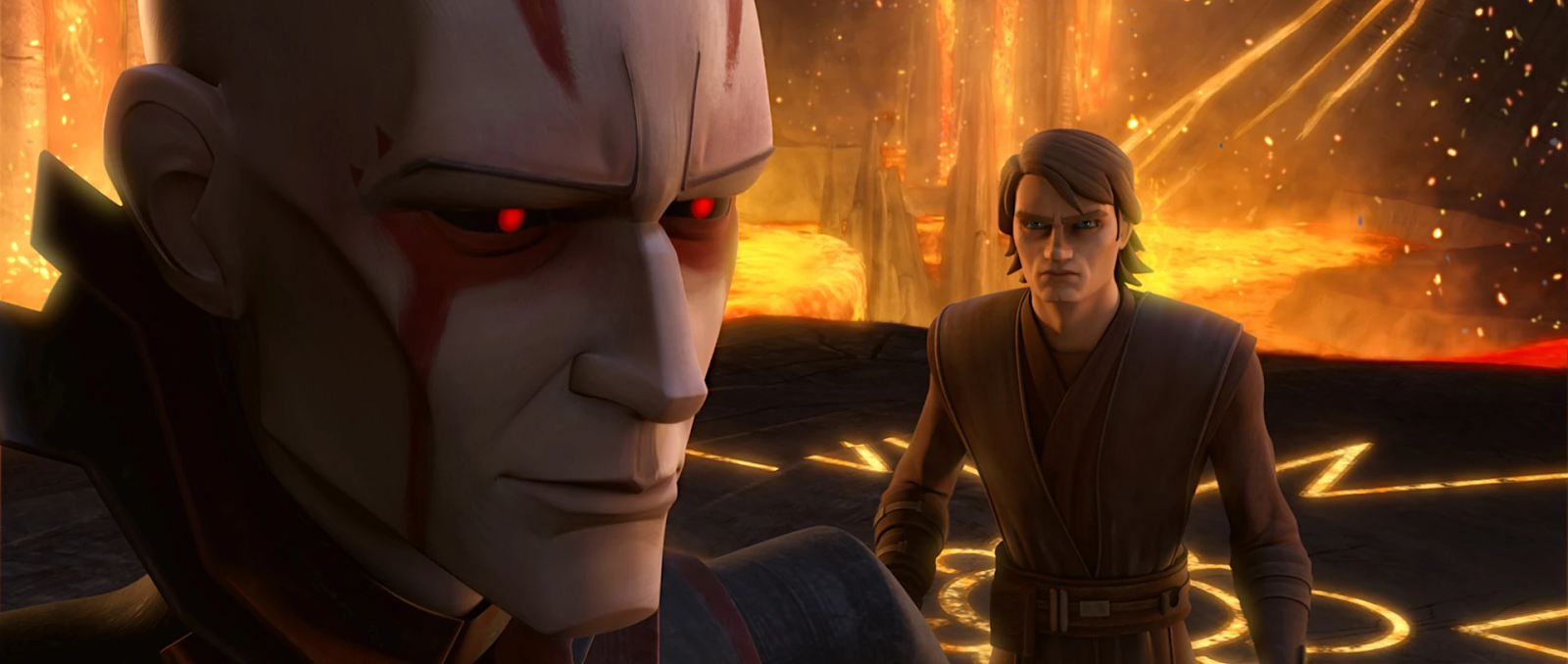
This surreal confrontation pushes Anakin’s raw power and destiny to the limits, testing his capacity to resist manipulation and embrace his fate.
The Son’s supernatural control over reality, with its eerie and shifting terrain, challenges Anakin in a battle as much about will and identity as saber skill.
The duel symbolizes the precarious balance within Anakin—the potential for both salvation and destruction. It foreshadows his eventual transformation into Darth Vader, laying the groundwork for his tragic fall through vivid metaphor and supernatural spectacle. This conflict deepens the saga’s exploration of fate, free will, and the Force’s enigmatic nature, making it one of the most philosophically resonant duels of the series.
Obi-Wan Kenobi and Quinlan Vos vs Cad Bane: Blades vs Blasters
Episodes like “The Box” showcase thrilling confrontations where traditional lightsaber combat collides with unconventional bounty hunter tactics.
Obi-Wan Kenobi and Quinlan Vos engage in agile, acrobatic duels against Cad Bane—a non-Force user whose cunning, blaster skills, and gadgets make him an unorthodox yet formidable foe. The blending of close-quarters swordplay with tactical maneuvers creates high stakes and unpredictability.
Cad Bane’s ability to challenge and outthink Jedi combatants elevates these encounters beyond standard fights, highlighting the evolving dynamics of warfare in the galaxy.
These duels emphasize that victory often requires more than just mastery of the Force or blades, underscoring the persistent threat posed by skill, strategy, and innovation in the Clone Wars.

Savage, Maul and Asajj: The Monster Unleashed
The explosive three-way clash between Savage Opress, Count Dooku, and Asajj Ventress in “Witches of the Mist” is a chaotic symphony of dark side power and betrayal.
Savage, fueled by raw aggression and vengeance, clashes with the calculated precision of Dooku and the cunning of Ventress, creating a volatile mixture of combat styles.
This battle epitomizes Sith training’s brutal and treacherous nature, where alliances are fragile, and power struggles intense.
The duel’s unpredictable environment and shifting loyalties underscore the inherent instability within Sith ranks.
It serves as a stark reminder of the costs of dark power unchecked by trust or honor, marking a turning point for all three participants and reflecting the destructive cycles perpetuated by Sith ambition and discord.
General Grievous vs Kit Fisto: Bladework vs Brutality
The “Lair of Grievous” confrontation pits Kit Fisto’s calm, composed agility against General Grievous’ relentless and brutal assault.
Fisto’s style—fluid, defensive, and optimistic—expresses hope and resilience amid overwhelming odds. In contrast, Grievous, a terrifying cyborg with four lightsabers wielded in furious combinations, embodies merciless efficiency and engineered rage.
Their duel is an intense contest of skill versus sheer ferocity, highlighting the diversity of fighting approaches in the Clone Wars.
It also signifies the broader clash between organic perseverance and mechanical destruction, further enriched by Kit Fisto’s unwavering spirit in the face of a monstrous adversary.
The Lightsaber as Character: Combat as Characterization
Throughout The Clone Wars, lightsaber duels are crafted as much to develop characters as to entertain.
Each combatant’s fighting style—Ahsoka’s reversal grip and dual sabers, Obi-Wan’s disciplined precision, Anakin’s fiery aggression—reflects their personality, growth, and inner turmoil. These fights serve as visual storytelling tools, revealing psychological states and philosophical divides without a word spoken.
The seven lightsaber forms employed across the series act as extensions of character arcs, with training, mastery, and deviations mirroring evolving identities.
Duel choreography becomes a language of emotion and fate, where every movement resonates with narrative significance, weaving the warriors' internal conflicts seamlessly into their outward battles.
Final Thoughts: A War Told Through Duels
The Clone Wars brilliantly transforms lightsaber duels into intimate character studies and pivotal narrative milestones.
Each duel reshapes not just individual destinies but also the galaxy’s trajectory, layering emotional stakes onto the blades’ deadly arcs.
These confrontations elevate combat beyond spectacle, making it an essential language of storytelling that enriches the saga’s complexity.
Fans are invited to reflect on their favorite duel and how it deepened their understanding of characters or changed their perspective on the Star Wars saga. One thing is certain: in The Clone Wars, every duel matters, every strike echoes through the Force, and the battle for the galaxy is waged every time lightsabers cross in deadly harmony.








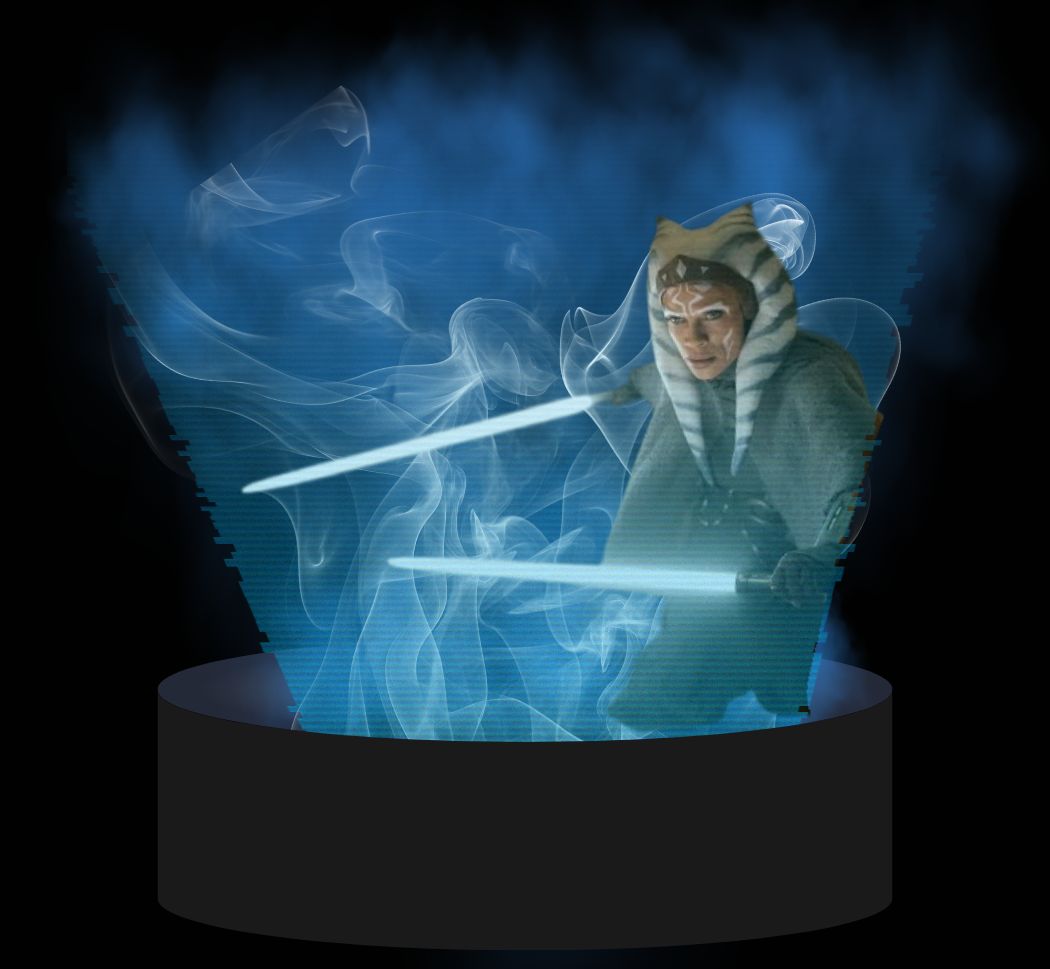
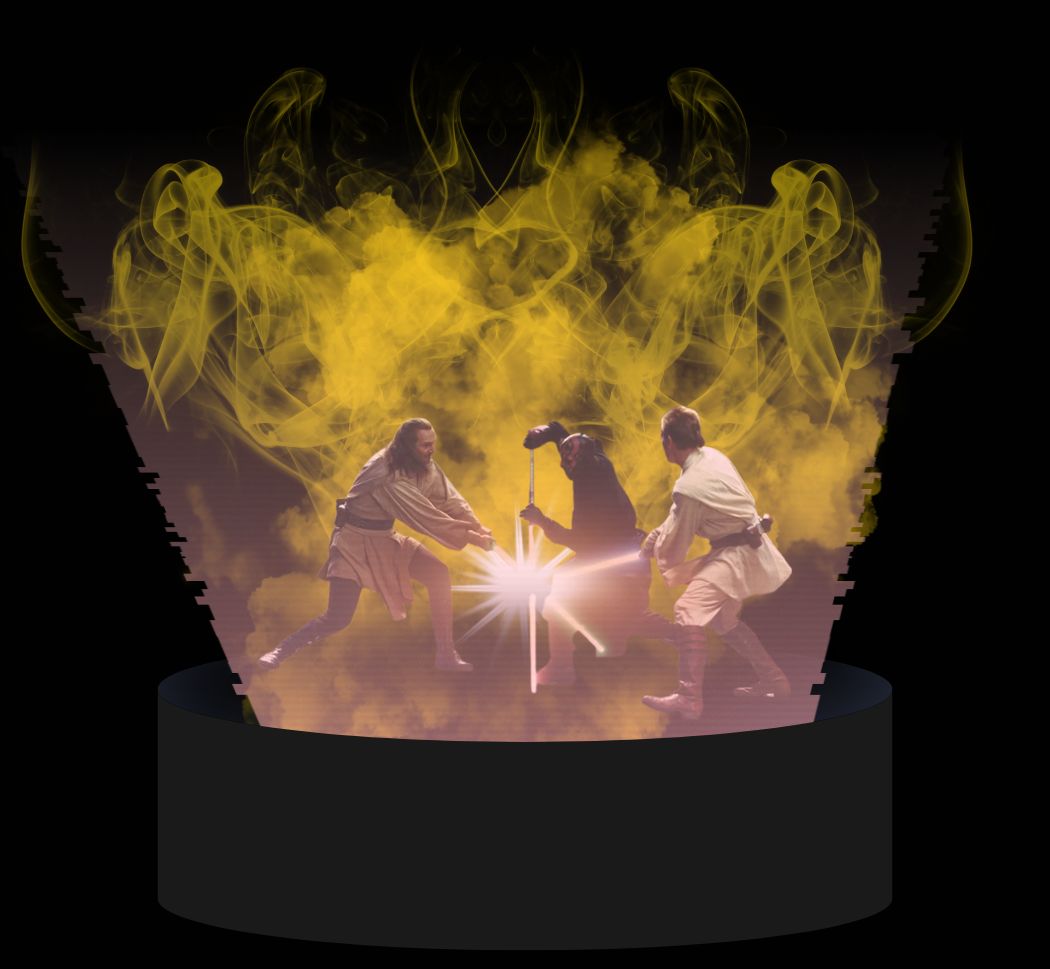
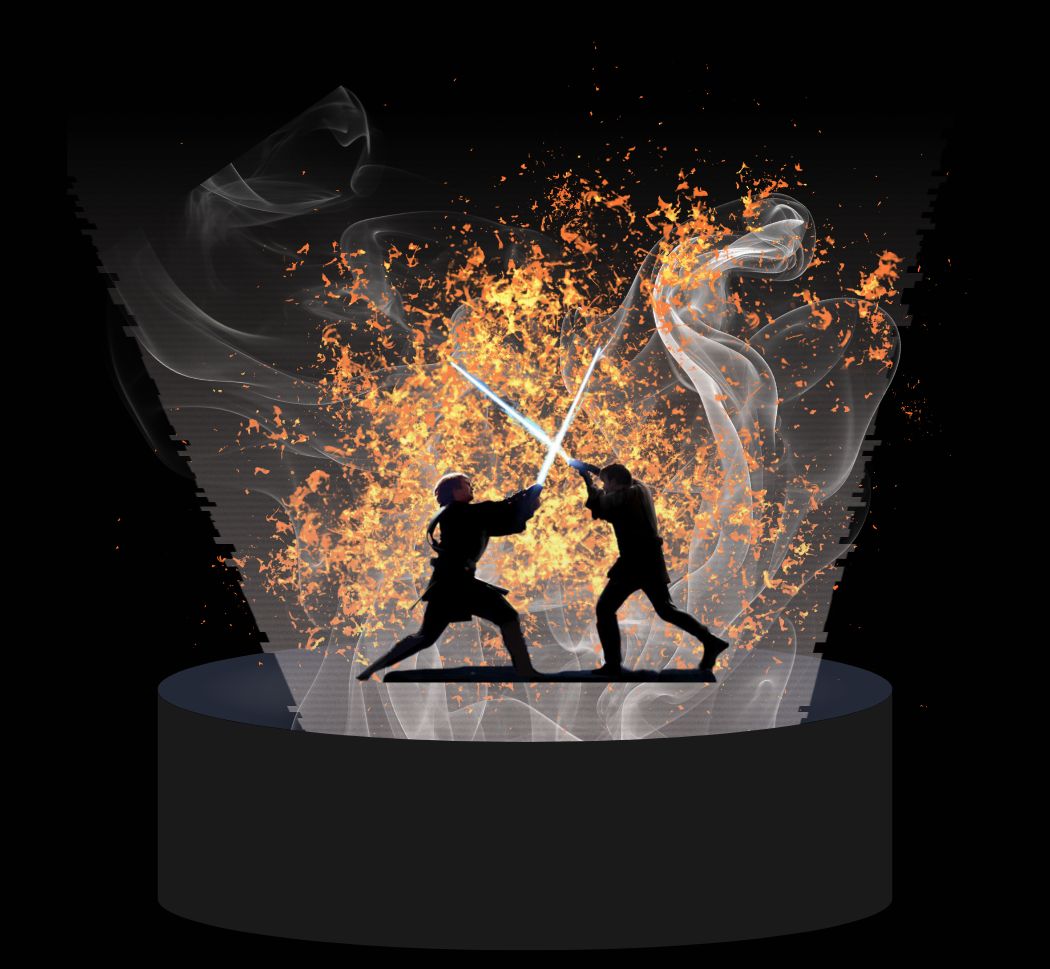
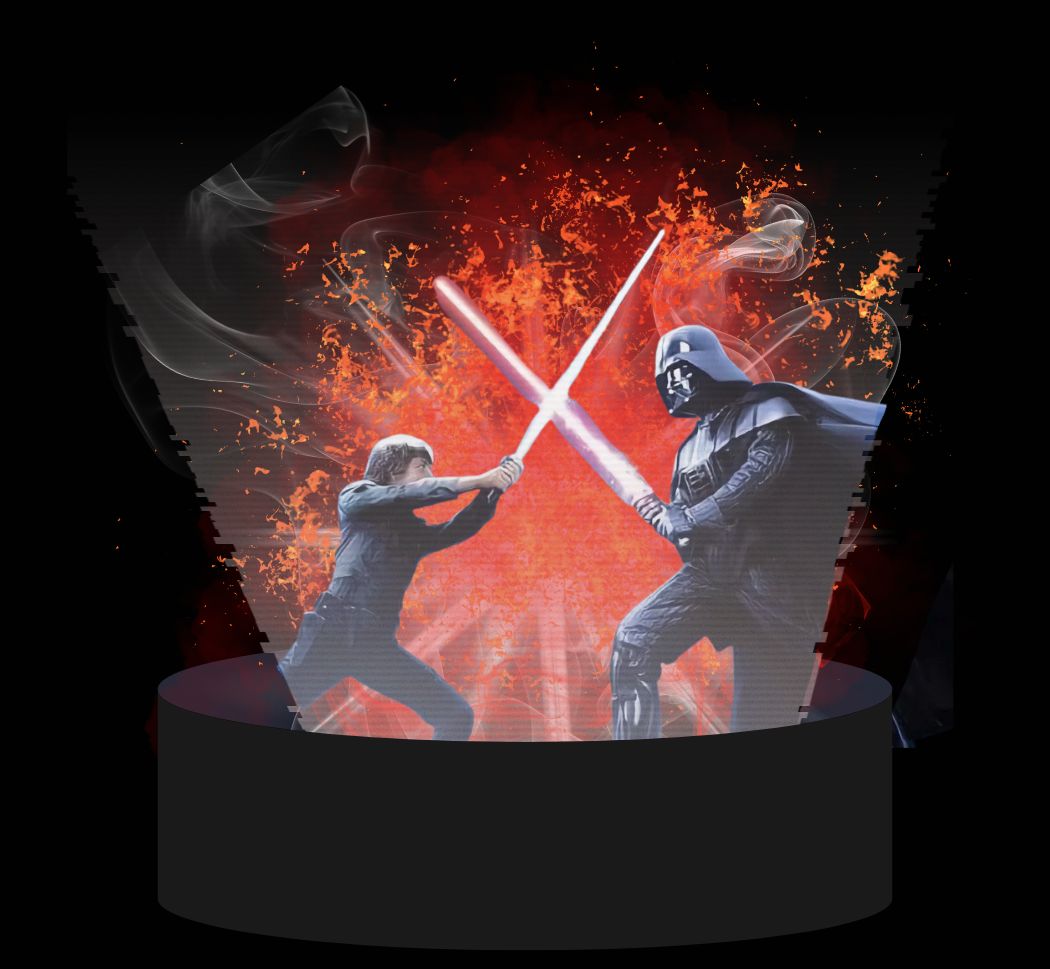

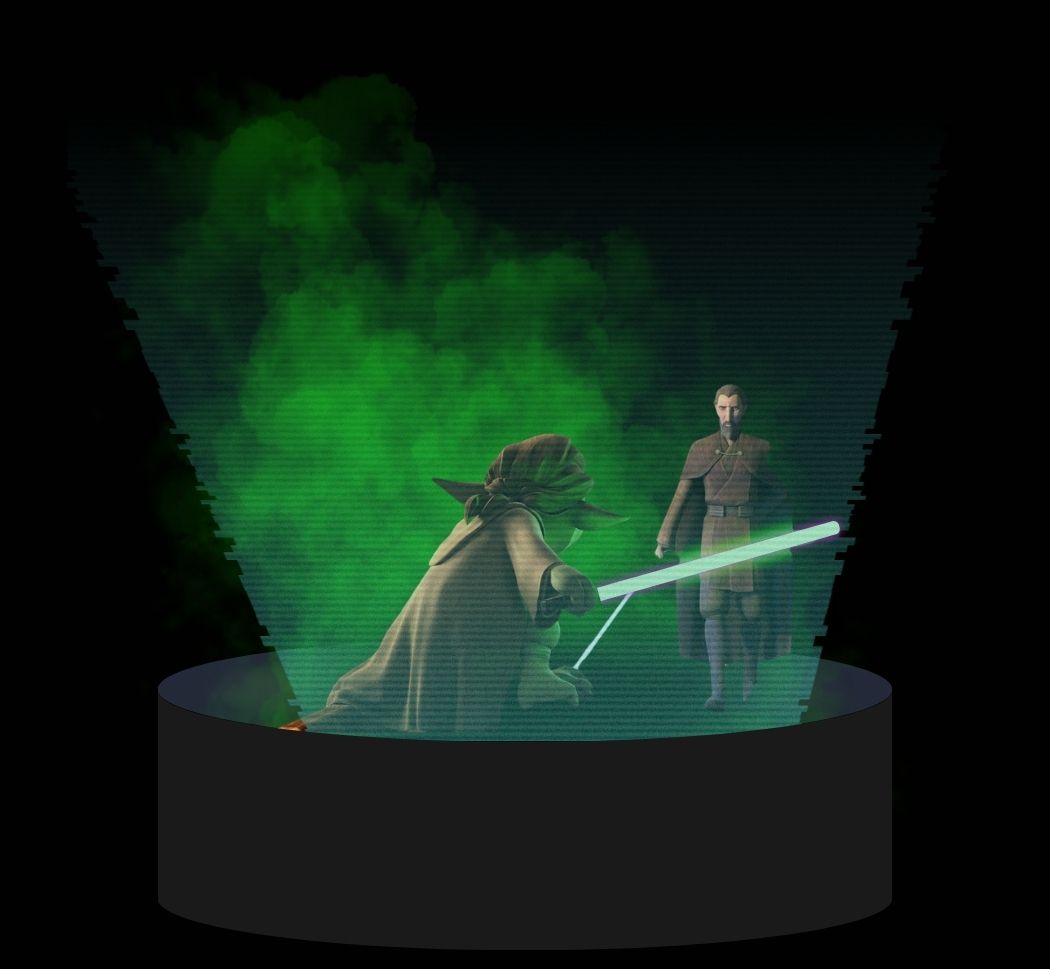




.jpg)
